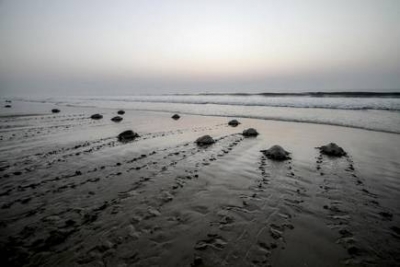
Olive Ridley sea turtles turned up for mass nesting this season, after having stayed away from the Rushikulya river mouth on the Orissa coast for two consecutive years.
Operation Kachhapa has deployed 10 field assistants to monitor the nesting jointly with Forest Department staff. Steps have been taken to protect the nests from predators like dogs and jackals, and also against theft of eggs by local fishermen for consumption.
There are three mass nesting sites in Orissa State. The first, Gahirmatha, in Kendrapara district, is the world’s largest rookery for Olive Ridley turtles. The second, the Rushikulya river mouth rookery, has seen mass nesting since March 1994, when the phenomenon was first discovered at this site.
Operation Kachhapa, under whose aegis a patrol trawler has been provided to the State Forest Department for patrolling the sea in and around the mouth of the Devi river, is engaged in:
- Building awareness and education by putting up posters, stickers and holding meetings for local fishermen in the coastal villages
- Empowering the local fisherman community in nearly 120 villages by using travelling minstrels and handbills to enlighten them about marine fishing laws, and how their livelihoods are affected by illegal trawling
- Providing information to the media about sea turtle activity throughout the season
- Lobbying the government for protection of the turtles by coast guard patrols and Forest Department patrols
- Monitoring turtle mortality along the beach (two camps are run, one each at the Devi river mouth and the Rushikulya river mouth)
- Monitoring turtle nesting sites outside the Sanctuary
- Providing protection to turtle nests against predators.
Picture Credit : Google

